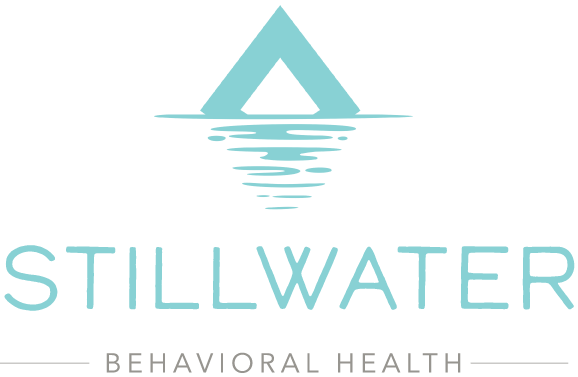Meth Addiction
Nearly two million people experimented with meth in 2017. Meth addiction is a life-threatening issue, but treatments are available.
What is Methamphetamine?
Methamphetamine is a controlled substance often abused in the United States and around the world. While it has many street names, which will be discussed later on, it is most commonly known as meth. In 2016, at least 1.6 million people reported having used meth in some way at least once throughout the year.1 Meth addiction is a severe problem, and if you or someone close to you is struggling with this disorder, seek help.
Questions about addiction?
Call Us Now: 1-866-232-9103
Your call is confidential with no obligation required to speak with us.
What Does Meth Look Like?
Meth commonly comes in the form of a fine white powder. While it is odorless, it has a distinct bitter taste and is easily dissolved. This quick-dissolving form allows it to be mixed with alcohol and water and either consumed or injected. It can also be snorted.
While snorting or injecting meth is the most common way to use it, other methods and forms exist, such as different colors or even pill forms.2 In addition, crystal meth has a different appearance than normal meth.
Meth vs. Crystal Meth
Chemically, meth and crystal meth are identical. In fact, the only difference between the two substances is appearance and usage. Whereas meth is a fine white powder that is easily dissolved, crystal meth comes in large chunks that must be broken down into smaller pieces.
A Further Look at Methamphetamine
What is Crystal Meth?
Crystal meth is a form of methamphetamine that appears as a large rock or crystal, hence its name. Unlike regular meth, which is often snorted or injected after being dissolved, crystal meth is usually smoked. This use method is due to its ability to break or flake off into smaller pieces.
Drug Class
Methamphetamine is a central nervous system stimulant. It can act as a catalyst for certain body conditions, including the production of certain brain chemicals, which can cause an increase in chemicals, especially dopamine.
Drug Schedule
Methamphetamine is a Schedule II substance3. This fact means that although it has a medical use, mainly in the treatment of certain disorders such as ADHD and narcolepsy, it also has been determined to have a high risk for abuse.
Street Names
As an illicit substance, there are many street names available for this substance. Some of the most common meth street names include
- Speed
- Crank
- Ice
- Chalk
- Wash
- White cross
- Snow
What Causes Addiction?
As of now, scientists have been unable to determine a single causer responsible for addiction, though there are many theories about what may increase an individual’s risk. Many of these factors pertain to both a person’s genetics and environment, which may contribute to meth addiction.

Access to the Drug
Accessibility is one of the leading causes of drug abuse and consequently meth addiction. Increased access to the substance allows for more frequent and higher doses, causing greater dependency.
Genetic Factors
The genetic source of meth addiction has long been discussed and studied. As of now, scientists are working to determine which genes create a higher vulnerability for substance abuse disorders and addiction. Family history also plays a role in the development of addiction, both from a genetic perspective as well as an environmental perspective.4
Environmental Factors
Environmental factors impact addiction in many ways. First, a family history of alcohol addiction has a greater chance of creating higher risks in an individual. Environmental factors can also pertain to increased access to substances such as meth.5 Certain environments can also influence someone to use substances.
Side Effects of Meth Use
Meth effects and signs of meth addiction can manifest in both physical and psychological forms.
Physical Effects
- Weight loss
- Meth mouth
- Dry mouth
- Headache
- Decreased appetite
- Increased heart rate
Psychological Effects
Meth directly impacts the central nervous system, including the brain, which can cause issues including:
- Decreased memory
- Poor judgment
- Impulsivity
- Depression
- Euphoria
Behavioral Effects
Meth can also change behavior. Common effects include:
- Decreased hygiene
- Isolation
- Personality changes
How is Meth Used?
Meth addiction is caused by substance abuse, though the form of abuse can vary. For meth, in particular, there are three many methods of misuse.
- Snorting Meth: Snorting meth involves inhaling the raw powder through the nose. It increases the rate of absorption while also increasing the risk of side effects.
- Shooting Up Meth: Shooting up meth involves dissolving the powder into water or a similar substance and injecting it intravenously. It increases the likelihood of infection as well as can spread disease.
- Smoking Meth: Smoking is most seen with crystal meth. It can increase the risk of respiratory infections and disorders.
Signs of Methamphetamine Use
Recognizing the signs of methamphetamine use can be one of the first steps in identifying a meth use disorder. These signs can appear in many forms, and not all will show at the same time.
Physical Changes
Over time, methamphetamine abuse can cause a general decline in one’s overall health. These issues include phenomena such as meth mouth, which will be discussed later, as well as weight loss.
Other physical signs of methamphetamine use include:
- Sores
- Chronic nose bleeds
- Congestion
- Weight loss
- Facial acne
- Signs of injection
Mood
Meth addiction can cause a variety of mood changes, including new mood swings. It can also cause euphoria, agitation, and even depression depending on the time between doses.
Meth Mouth
Meth mouth, also known as meth teeth, is one of the more noticeable signs of meth addiction.
This phenomenon refers to the increased dental decay that often occurs with meth addiction and abuse. Meth mouth usually occurs as a result of a combination of meth effects, including behavioral change such as hygiene negligence as well as physical symptoms like dry mouth.6
Meth Sores
Meth can cause picking or scratching, especially when larger amounts are taken. This habit can lead to the development of sores and other open wounds. Injection can also increase the frequency of sores appearing. Injection meth sores will normally be found on the arms and thighs.
What Does Meth Smell Like?
Meth is usually odorless. If it has been mixed with another substance, though, it may have a slight smell, including a chemical scent.
Methamphetamine Side Effects

Meth side effects can occur whenever the drug is abused. Some of the common meth side effects are included below.
Short-Term Effects
Some of the short-term meth side effects include:
- Increased blood rate
- Feelings of euphoria or grandeur
- Impulsivity
- Mood swings
- Irritability
Long-Term Effects
Long-term meth effects occur with routine abuse. These effects can relate to the method of abuse, such as respiratory or sinus issues depending on smoking or snorting. They can also occur as a result of cumulative strain on the body, such as chronic overdose.
Meth Psychosis
Meth psychosis is one of the more dangerous meth side effects. Psychosis can occur for many different reasons, including mental health disorders.
Regardless of its cause or trigger, psychosis can be dangerous not only for an individual but for those around them. This condition can cause hallucinations, anxiety, and paranoia that creates an unsafe environment.
Overdose
An overdose can occur with both infrequent and frequent drug abuse. A meth overdose happens any time the body is exposed to too high of a dose, whether that be at once (acute) or over time (chronic). An overdose is a medical emergency that requires immediate attention.
Meth Withdrawal
Meth withdrawal symptoms occurs as the body begins to metabolize and eliminate the remaining traces of the substance, such as during detox. As the body begins to revert to its natural chemistry, it can cause meth withdrawal symptoms such as depression, which is a result of the drop in dopamine.
Meth withdrawal can be dangerous if undergone at home. The intense cravings that often come with it can lead to higher levels of abuse, which can increase the risk for overdose. Several physical and psychological symptoms can cause intense discomfort and may require additional treatment for increased rates of successful treatment.
Meth Addiction Treatment
Meth addiction can damage relationships and place people at greater risks of injury, including meth overdose or even death. However, there are many meth addiction treatments available to aid in recovery and provide support during withdrawal while also designing a long-term plan for continued treatment and relapse prevention.
Common Behavioral Therapies for Meth Addiction
While many behavioral therapies exist to treat meth addiction, there are also many forms of counseling. While therapy approaches addiction from a medical standpoint, counseling is focused on guided talk with the patient as the center.
Examples of counseling include family counseling to mend connections and discuss possible history, 12-step programs, and support groups to build a healthy system for patients to reach out to.
CBT
CBT refers to cognitive-behavioral therapy. It is a form of psychotherapy designed to help a patient evaluate and correct dangerous thought patterns and behaviors by rewiring potentially damaged brain reward pathways.
MAT
Medication-assisted treatment is a type of pharmacotherapy that uses medicine to aid in blocking the effects of meth and reducing drug withdrawal symptoms.
Matrix Model
The Matrix model is a newer form of behavioral treatment. It is a combination of several beneficial forms and aspects of treatment, including therapy, counseling, and relapse prevention.
Interventions
In many cases, intervention may be the first step in seeking meth addiction treatment. Its purpose is to highlight the problem while also detailing the risks of substance abuse disorders. Many times, close family members and friends are included during the intervention to build a support system.
Inpatient Rehab
Inpatient rehab provides a safe environment as well as constant access to care and support while seeking treatment. It is usually short-term and occurs in a rehabilitation facility.
Outpatient Rehab
Outpatient rehab allows patients to continue their daily lives while seeking the care they need. It is private and lets patients explore new perspectives and coping mechanisms as they learn them.
Resources
- https://www.drugabuse.gov/publications/research-reports/methamphetamine/what-scope-methamphetamine-misuse-in-united-states
- https://www.drugfreeworld.org/drugfacts/crystalmeth/what-does-methamphetamine-look-like.html
- https://www.dea.gov/sites/default/files/2020-06/Methamphetamine-2020_0.pdf
- https://www.jstor.org/stable/27858548
- https://academic.oup.com/milmed/article/170/8/688/4577705?login=true
- https://www.mouthhealthy.org/en/az-topics/m/meth-mouth


